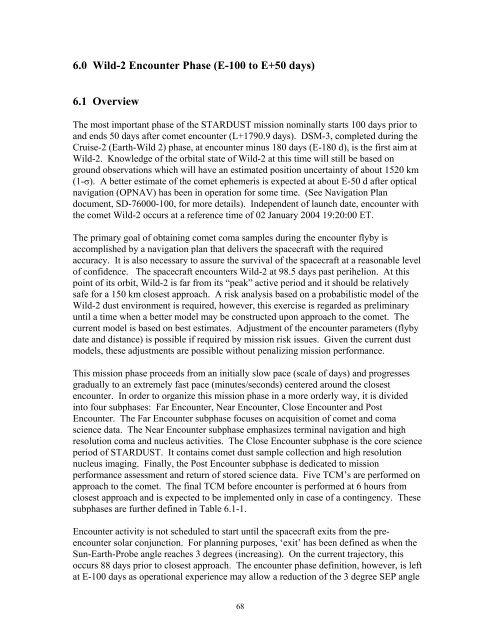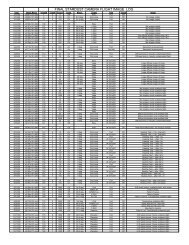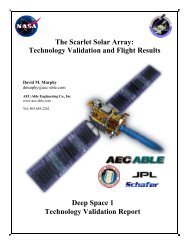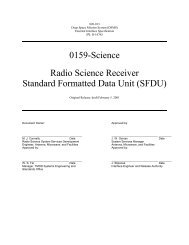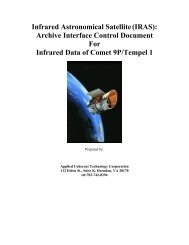MISSION PLAN - PDS Small Bodies Node
MISSION PLAN - PDS Small Bodies Node
MISSION PLAN - PDS Small Bodies Node
Create successful ePaper yourself
Turn your PDF publications into a flip-book with our unique Google optimized e-Paper software.
6.0 Wild-2 Encounter Phase (E-100 to E+50 days)<br />
6.1 Overview<br />
The most important phase of the STARDUST mission nominally starts 100 days prior to<br />
and ends 50 days after comet encounter (L+1790.9 days). DSM-3, completed during the<br />
Cruise-2 (Earth-Wild 2) phase, at encounter minus 180 days (E-180 d), is the first aim at<br />
Wild-2. Knowledge of the orbital state of Wild-2 at this time will still be based on<br />
ground observations which will have an estimated position uncertainty of about 1520 km<br />
(1-σ). A better estimate of the comet ephemeris is expected at about E-50 d after optical<br />
navigation (OPNAV) has been in operation for some time. (See Navigation Plan<br />
document, SD-76000-100, for more details). Independent of launch date, encounter with<br />
the comet Wild-2 occurs at a reference time of 02 January 2004 19:20:00 ET.<br />
The primary goal of obtaining comet coma samples during the encounter flyby is<br />
accomplished by a navigation plan that delivers the spacecraft with the required<br />
accuracy. It is also necessary to assure the survival of the spacecraft at a reasonable level<br />
of confidence. The spacecraft encounters Wild-2 at 98.5 days past perihelion. At this<br />
point of its orbit, Wild-2 is far from its “peak” active period and it should be relatively<br />
safe for a 150 km closest approach. A risk analysis based on a probabilistic model of the<br />
Wild-2 dust environment is required, however, this exercise is regarded as preliminary<br />
until a time when a better model may be constructed upon approach to the comet. The<br />
current model is based on best estimates. Adjustment of the encounter parameters (flyby<br />
date and distance) is possible if required by mission risk issues. Given the current dust<br />
models, these adjustments are possible without penalizing mission performance.<br />
This mission phase proceeds from an initially slow pace (scale of days) and progresses<br />
gradually to an extremely fast pace (minutes/seconds) centered around the closest<br />
encounter. In order to organize this mission phase in a more orderly way, it is divided<br />
into four subphases: Far Encounter, Near Encounter, Close Encounter and Post<br />
Encounter. The Far Encounter subphase focuses on acquisition of comet and coma<br />
science data. The Near Encounter subphase emphasizes terminal navigation and high<br />
resolution coma and nucleus activities. The Close Encounter subphase is the core science<br />
period of STARDUST. It contains comet dust sample collection and high resolution<br />
nucleus imaging. Finally, the Post Encounter subphase is dedicated to mission<br />
performance assessment and return of stored science data. Five TCM’s are performed on<br />
approach to the comet. The final TCM before encounter is performed at 6 hours from<br />
closest approach and is expected to be implemented only in case of a contingency. These<br />
subphases are further defined in Table 6.1-1.<br />
Encounter activity is not scheduled to start until the spacecraft exits from the preencounter<br />
solar conjunction. For planning purposes, ‘exit’ has been defined as when the<br />
Sun-Earth-Probe angle reaches 3 degrees (increasing). On the current trajectory, this<br />
occurs 88 days prior to closest approach. The encounter phase definition, however, is left<br />
at E-100 days as operational experience may allow a reduction of the 3 degree SEP angle<br />
68


